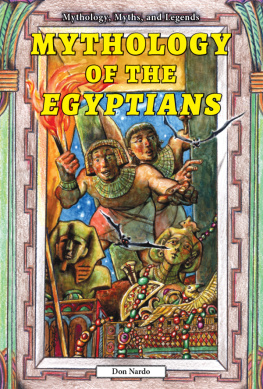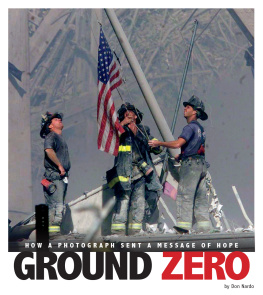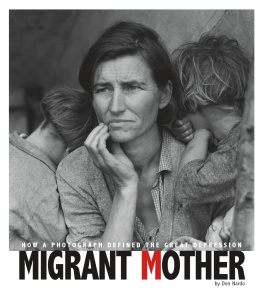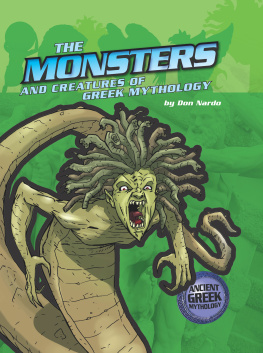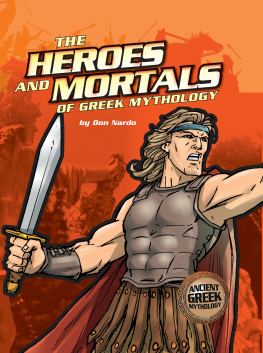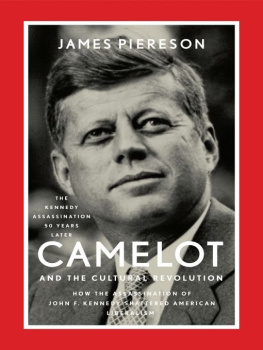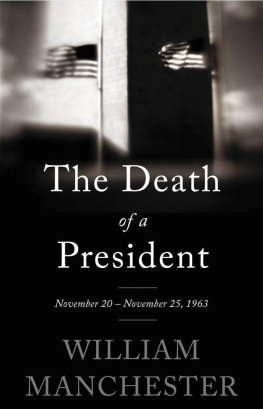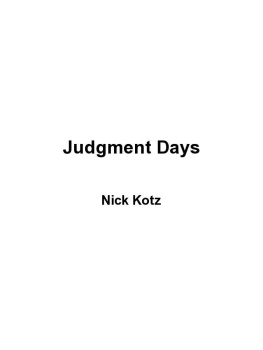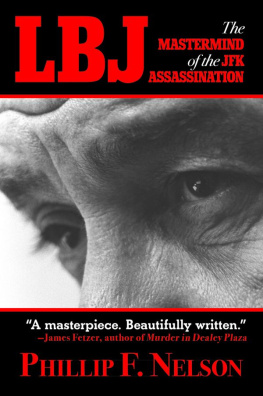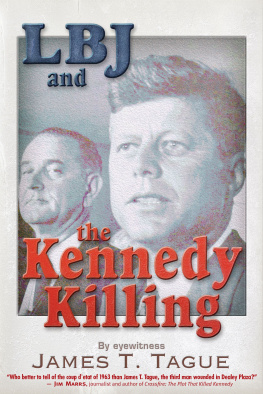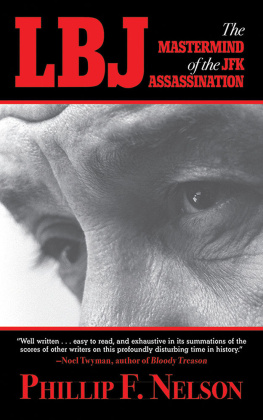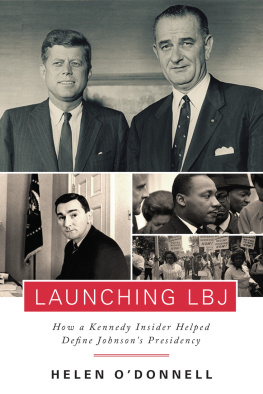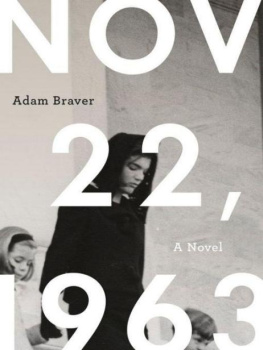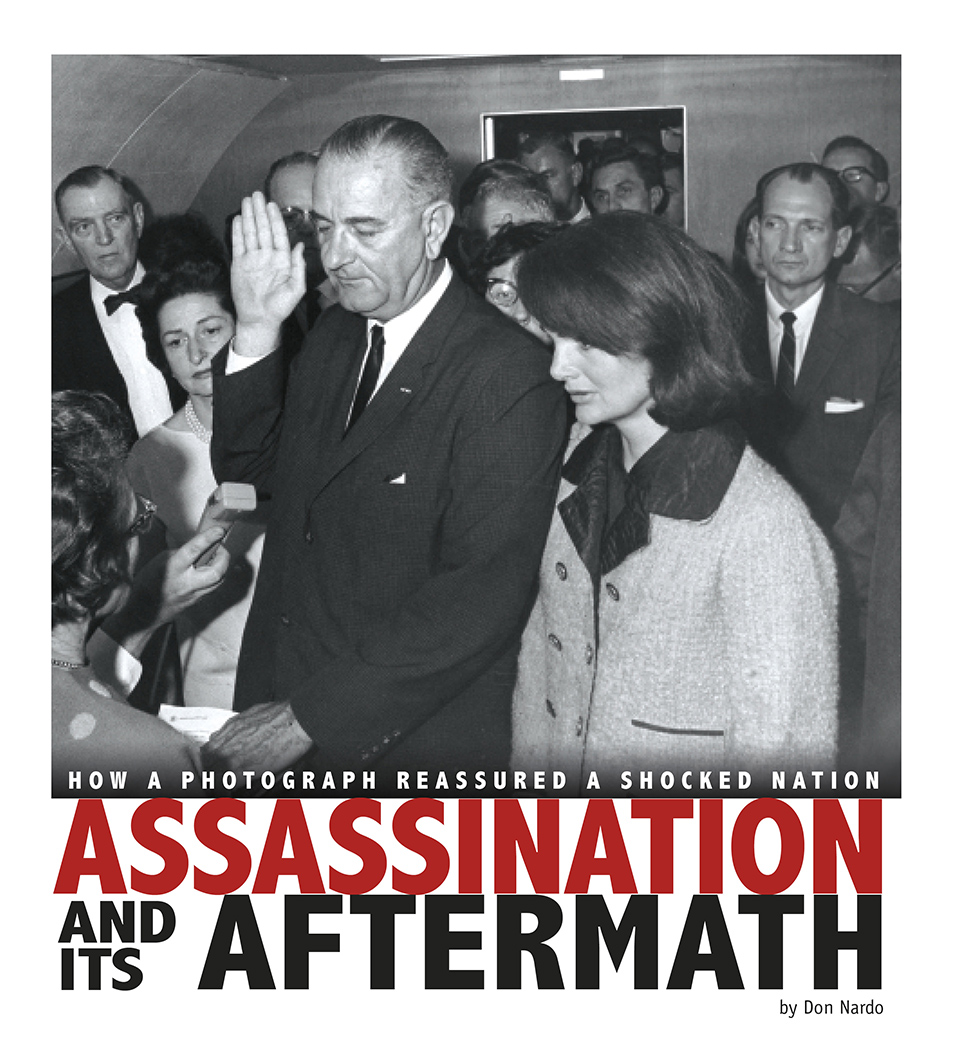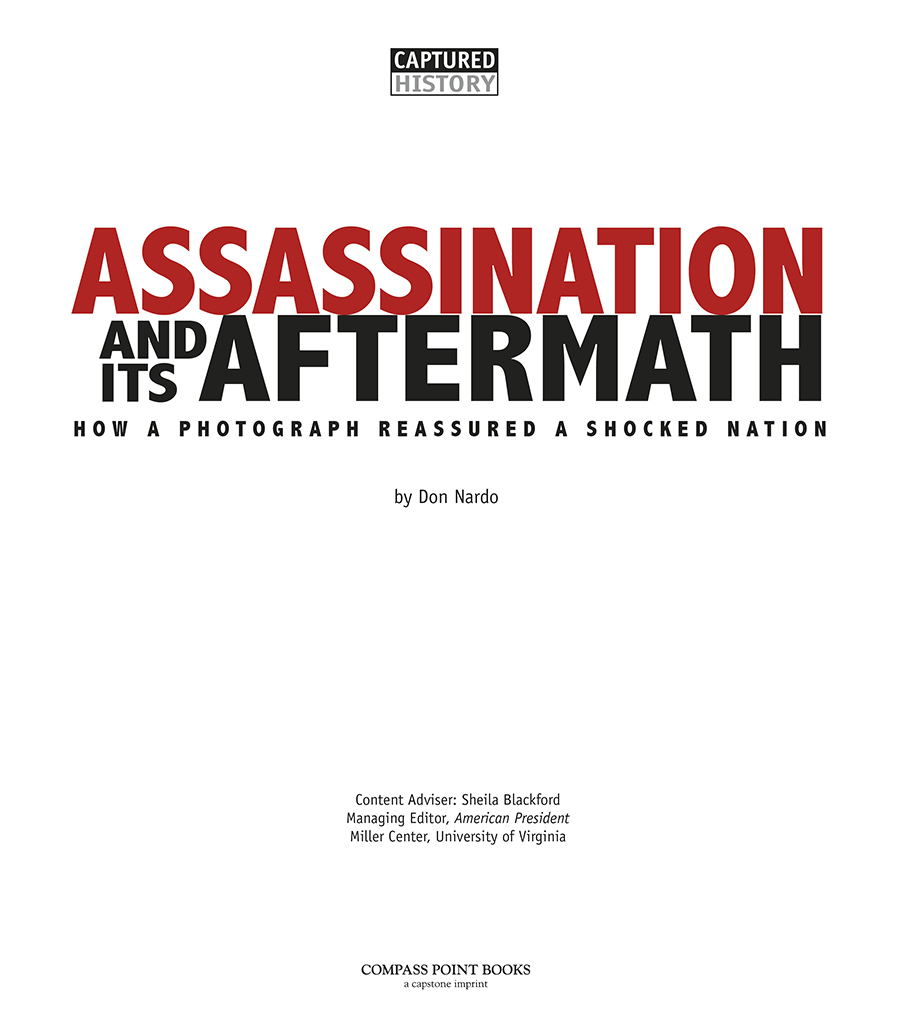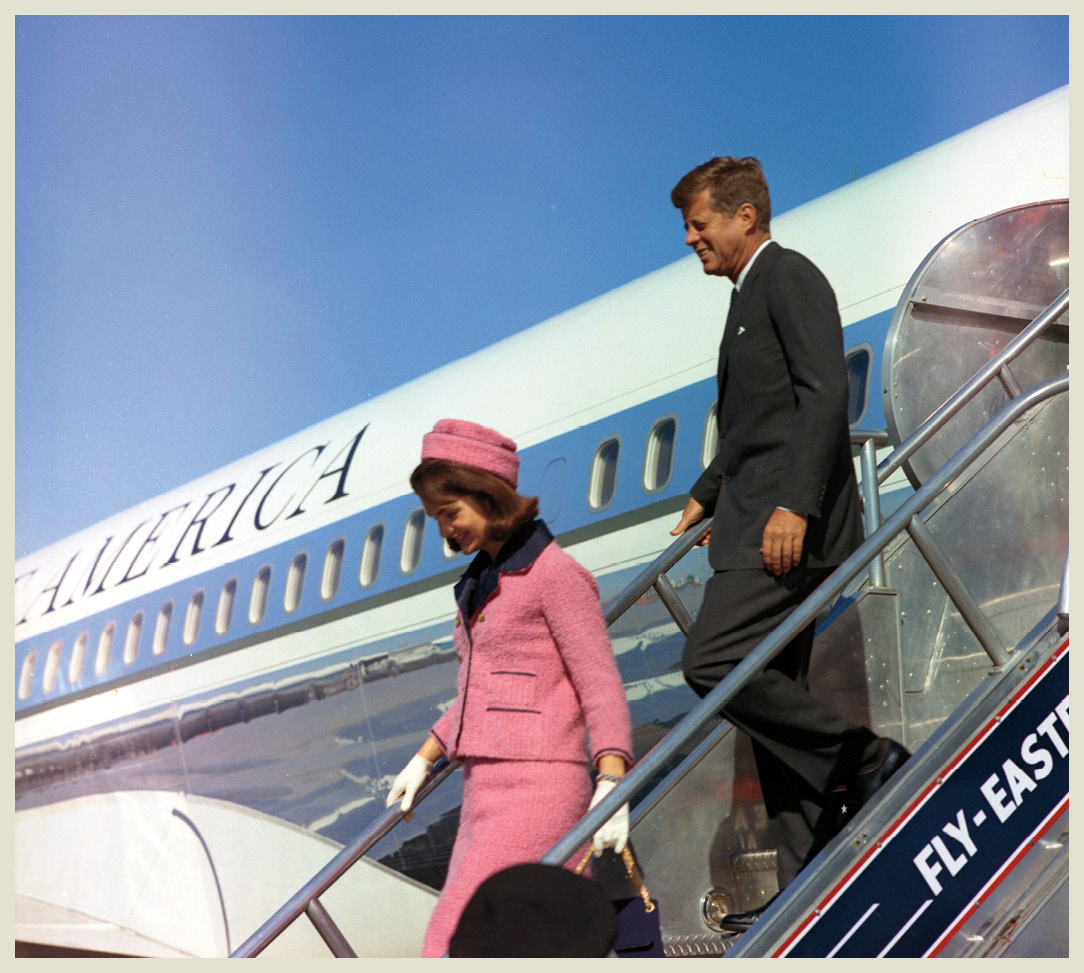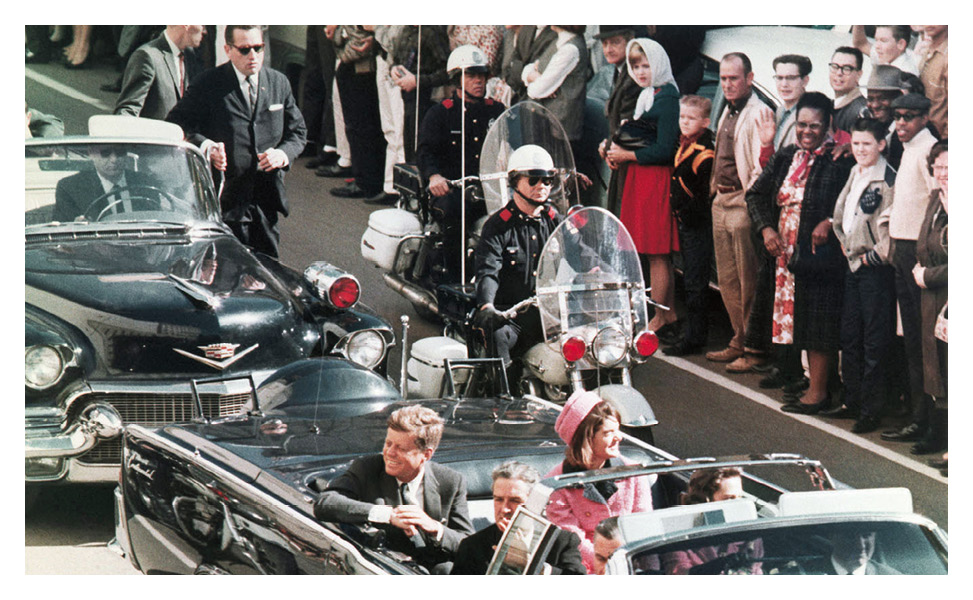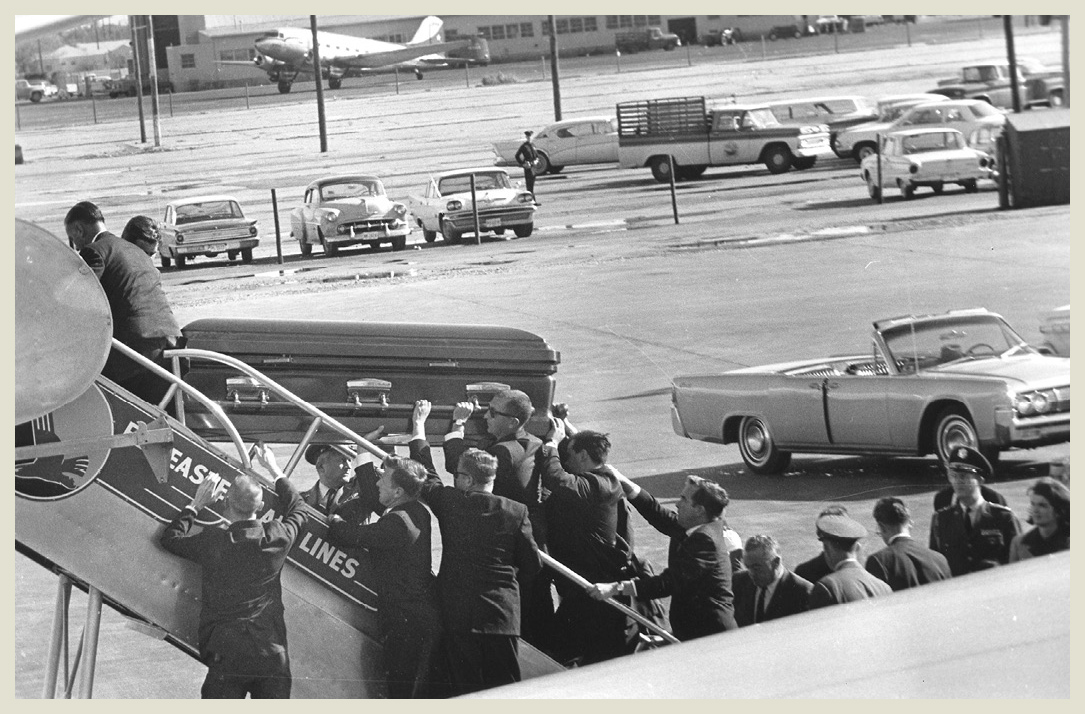Chapter One
TRANSFER OF POWER
Cecil Stoughton was pleased to see the sun shining brightly in a cloudless Texas sky. As official White House photographer, he regularly took photos to document President John F. Kennedys life and travels. Thanks to the sunny skies, Stoughton knew, the pictures he had taken that morningNovember 22, 1963would be sharp and clear. He had gotten most of them just after the presidents plane, Air Force One , had landed at Dallas Love Field. They showed dozens of flags, hand-painted welcome signs, and a lot of warmth, Stoughton later said. It was just a beautiful reception, a bright, warm, sunny day and thousands of people cheering.
Cecil Stoughtons camera captured the smiling President John F. Kennedy and his wife, Jacqueline, as they arrived at Love Field in Dallas on November 22, 1963.
A few minutes later, the president and his wife, Jacqueline Kennedy, climbed into the blue Lincoln convertible they used for public appearances. Stoughton jumped into the seventh car behind the presidents in the motorcade, which promptly left the airport for downtown Dallas. The photographer glanced down at his camera and saw that he had used up half the shots in his roll. Hoping to save the rest for Kennedys luncheon speech at the Dallas Trade Mart, Stoughton took only one more picture during the trip through town. He had no way of knowing that he would soon be snapping the most important photos of his career.
The motorcades journey through central Dallas was, in a historians words, like driving between the walls of a canyon. The windows of the buildings forming those walls were filled, floor after floor, building after building, with people leaning out and cheering, and on the sidewalks the crowds were eight people, ten people deep.
Stoughton was not surprised. He was used to seeing such displays of excitement and affection for the young, handsome chief executive and his widely popular wife. Clearly, even in Dallas, where Kennedy had many political foes, he also had many supporters.
Crowds greeted Kennedys motorcade on Main Street in Dallas, moments before the president was shot.
Leaving the bigger buildings behind, the motorcade began to pass an open area called Dealey Plaza. Just after Stoughtons vehicle made a right turn, he heard three loud, sharp noises. He recognized them as gunshots. But he did not leap to the conclusion that they were intended to cause harm. Turning to another photographer, he said, Hey, Art, these Texans really know how to welcome a guy, dont they? Stoughton later recalled: In my mind I saw a guy on the roof in a ten-gallon hat with a six-shooterbang bang! bang bang! Thats what I thought.
However, Stoughtons lighthearted mood quickly turned serious. A few seconds past 12:30 p.m., his car swung onto Elm Street, with the tall, redbrick Texas School Book Depository building looming nearby. At this point, he later recollected, We realized something was amiss, as the cars ahead of us were gone. As his car rolled to a stop, Stoughton noticed four peopleevidently the members of a familycowering on the ground beside the road. Following his instincts, he jumped from the car, rapidly lined up a shot of them, and pressed the cameras shutter release.
It was obvious to Stoughton that these people had just witnessed something frightening. With dread growing in the pit of his stomach, he looked around for the presidents limousine. It was nowhere in sight. Leaping back into the car, he yelled to the driver, Lets get the hell out of here! At first no one in Stoughtons vehicle knew where the lead cars of the motorcade had gone. But soon people standing nearby pointed down the street and shouted, Hes at Parkland!
About 15 minutes later, Stoughton was in front of Parkland Hospital. By this time he had realized that Kennedy had been badly wounded by the gunfire in Dealey Plaza. Carefully the photographer snapped two shots of Secret Service agents covering the empty, blood-soaked Lincoln convertible. Then he went inside.
Stoughton photographed frightened bystanders and other photographers before racing to Parkland Hospital.
THE DEADLY RIFLE SHOTS
Photographer Cecil Stoughton said he had heard the deadly rifle shots that struck President Kennedy. Another description of the shots, from a different perspective, was given by Clinton J. Hill. He was a Secret Service agent who had been standing on a running board of the car behind the one carrying the president and his wife.
Hill appeared before the Presidents Commission on the Assassination of President Kennedy, commonly called the Warren Commission, in March 1964. He testified about what had happened when he heard gunshots: The motorcade made a left hand turn from Elm Street toward an underpass when I heard a noise similar to a firecracker. The sound came from my right rear and I immediately moved my head in that direction. In so doing, my eyes had to cross the presidential automobile and I saw the president hunch forward and then slump to his left.
I jumped from the follow-up car and ran toward the presidential automobile. I heard a second firecracker type noise but it had a different soundlike the sound of shooting a revolver into something hard. I saw the president slump more toward his left. I jumped onto the left rear step of the presidential automobile. Mrs. Kennedy shouted, Theyve shot his head off; then turned and raised out of her seat as if she were reaching to her right rear toward the back of the car for something that had blown out. I forced her back into her seat and placed my body above President and Mrs. Kennedy.
The Warren Commission presented its findings to President Johnson in September, and the report was immediately made public. Although many people disagreedand many continue to disagree even todaythe commission concluded that the assassin, Lee Harvey Oswald, acted alone and was not part of a conspiracy to kill Kennedy.
Secret Service agent Clinton J. Hill (in dark suit and sunglasses) was directly behind the presidential car.
It wasnt long before Stoughton caught sight of Vice President Lyndon Johnson and his wife, Lady Bird. They were pushing through the out door, the photographer later said, and I asked, Wheres he going? and [someone answered] The president is going to Washington. I knew then that Kennedy had expired, and I said, So am I.
Gripped by feelings of uncertainty and worry, Stoughton got a ride to the airport in a police car along with Johnsons aides. Hurrying to Air Force One, Stoughton climbed aboard. From a window he saw the arrival of a large bronze casket bearing President Kennedys body. Stoughton took several pictures of Secret Service agents loading the casket onto the plane.


